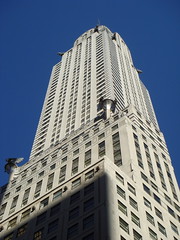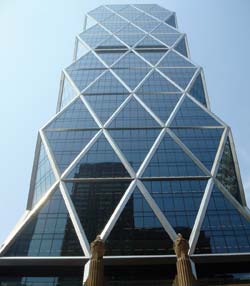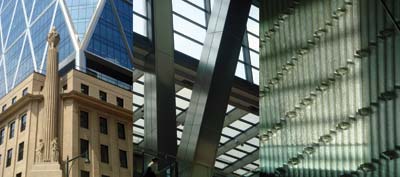
Chrysler Building in New York NY
Our Gallery
Hearst Tower On the Web: |
 Foster and Partners has an extensive catalog of world famous buildings and projects under their belts. They did the Reichstag (capital building of Germany) redevelopment in Berlin, the Millennium Bridge in London, the London City Hall and are currently completing the reconstruction of Wembley Stadium and the Beijing Airport. But the Hearst Tower is the green jewel in his crown of achievements.
Foster and Partners has an extensive catalog of world famous buildings and projects under their belts. They did the Reichstag (capital building of Germany) redevelopment in Berlin, the Millennium Bridge in London, the London City Hall and are currently completing the reconstruction of Wembley Stadium and the Beijing Airport. But the Hearst Tower is the green jewel in his crown of achievements.
Green Trivia: Annual carbon dioxide reduction associated with the decreased energy useage is 896 tons per year. The roof collects rainwater, reducing the amount of water dumped into the city’s sewer system during rainfall by 25%. Hearst Corporations diversion rate (materials not sent to landfills) is currently 75%. First commercial building in New York City to recieve a Gold Rating by the U.S. Green Building Council. |

| Jobs | 5 | Real Estate - Sale | 0 | |
| Real Estate - Rent | 0 | Buy / Sell / Trade | 0 | |
| Personals | 0 | Automotive | 0 | |

| Daily Poll | ||
|